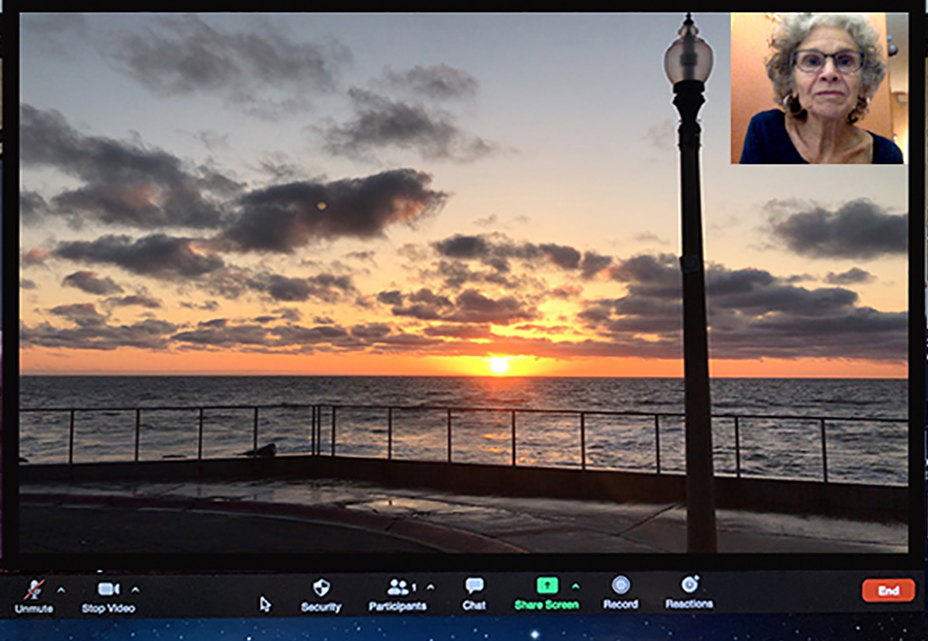
I flipped my appointment book back to March 16, 2020. The page is covered in red ink circling the names of clients I needed to contact to schedule virtual sessions. Scrawled across the week’s calendar in purple highlighter is “COVID.
I started with phone sessions, then FaceTime. Four months into the pandemic, I added Zoom.
When I became a clinician, therapy was face-to-face and personal. A therapist’s office was sacrosanct and the fifty-minute hour was uninterrupted by the world outside. But our world changed and I had to adapt. Fast.
I’m less than a novice when it comes to the internet, and felt mildly terrified to add Zoom to my telehealth options. After summiting the steep learning curve, I scheduled my first session. When the day came, I wondered if my client would actually be in the virtual waiting room. I clicked “start” and saw my own face. It was unnerving. Prior to COVID, I’d look in the mirror just long enough to comb my hair and apply makeup before flying out the door to work.
I clicked “admit” and my client’s face filled the screen. My image flew up in the upper right-hand corner, becoming postage stamp size. We smiled at each other.
I said, “It’s so good to see you.”
She responded, “Me too.”
My office at home is only half of our virtual therapy space. The client sees me sitting at my desk, framed by a flat screen. On the wall behind me is art made from a very large snakeskin in hexagonal patterns of brown and cream. A mobile of the solar system hangs from the ceiling, rotating slowly when the window’s open and there’s a breeze. My office doesn’t change, but the clients could be anywhere. They can move from room to room or even venture outdoors.
I see a woman once a month on Wednesday morning. If the weather is warm, our office is her patio. Sometimes her face is striped with light and shadow from sunlight filtering through the latticework above her. It’s lovely and therapy feels like a break from everyday life for both of us.
My last session on Thursdays is in a dramatic setting. My client usually meets with me in his car on his way home from work, parked about a hundred yards from the Pacific Ocean. Late one rainy afternoon last winter, under a canopy of gray storm clouds, the setting sun stained the horizon burnt orange. My client said, “I’m gonna roll down the window so we can hear the waves.” As we ended our session, I felt like I was right there with him in the passenger seat.
Another favorite place is a couple’s bedroom. It’s often the only room in the house where they can have privacy. There’s a special kind of intimacy in being with two people sitting comfortably on their bed talking about their relationship. Sometimes a kid comes in to see what’s going on, or the dog jumps up on the bed, and couples therapy becomes a family event.
Meeting clients where they are at any given moment in time is foundational. It depends on mutual trust, and on the client and the therapist’s willingness to be vulnerable. Being invited into the places where my clients live was a brave manifestation of that vulnerability, and at times took therapy to a deeper level. I felt honored to have been welcomed into my clients’ homes, but I still looked forward to the time when I could see them in person.
When shelter in place restrictions were lifted, I discovered that clients liked having a choice. The world has changed, we have changed, and so has therapy. Now my office includes a small desk with my laptop open to the Zoom app alongside the therapist’s comfortable couch. I’m learning to meet people in person and on-line, moving between worlds from one session to the next. My new therapist chair has wheels, and on good days it feels like a dance.

Recent Comments